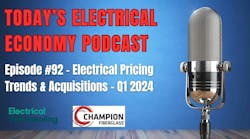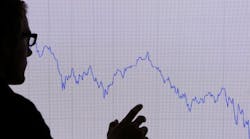Building permits show some growth in April. The U.S. Census Bureau said privately-owned housing units authorized by building permits in April were at a seasonally adjusted annual rate of 1,116,000, 3.6% above the revised March rate of 1,077,000, but 5.3% below the April 2015 estimate of 1,178 units.
Purchasing managers still mildly bullish in April. Bradley Holcomb, chair of the Institute for Supply Management (ISM) Manufacturing Business Survey Committee said the April PMI registered 50.8%, a decrease of 1% from the March reading of 51.8%.
Architects feeling better about future design jobs. After beginning the year with a decline, the Architecture Billings Index has posted three consecutive months of increasing demand for design activity at architecture firms. As a leading economic indicator of construction activity, the ABI reflects the approximate nine- to twelve-month lead time between architecture billings and construction spending. The American Institute of Architects (AIA) reported the April ABI score was 50.6, down from the mark of 51.9 in the previous month. This score still reflects an increase in design services (any score above 50 indicates an increase in billings).
“Architects continue to report a wide range of business conditions, with unusually high variation in design activity across the major building categories,” said AIA Chief Economist, Kermit Baker. “The strong growth in design contracts — the strongest score for this indicator since last summer — certainly suggests that firms will be reporting growth in billings over the next several months.”
Leading economic indicators looking up. The Conference Board Leading Economic Index (LEI) for the U.S. increased 0.6% in April to 123.9 (2010 = 100), following no change in March, and a 0.1% increase in February. “The U.S. LEI picked up sharply in April, with all components except consumer expectations contributing to the rebound from an essentially flat first quarter,” said Ataman Ozyildirim, director of business cycles and growth research at the Conference Board. “Despite a slow start in 2016, labor market and financial indicators, and housing permits all point to a moderate growth trend continuing in 2016.”









